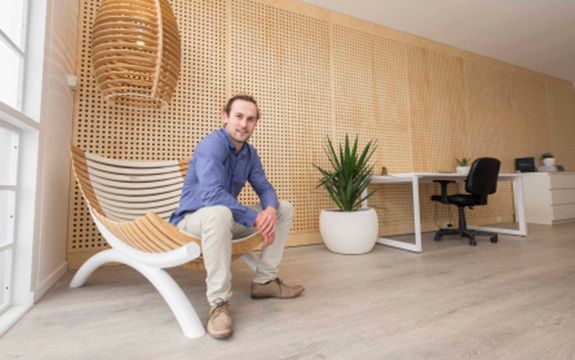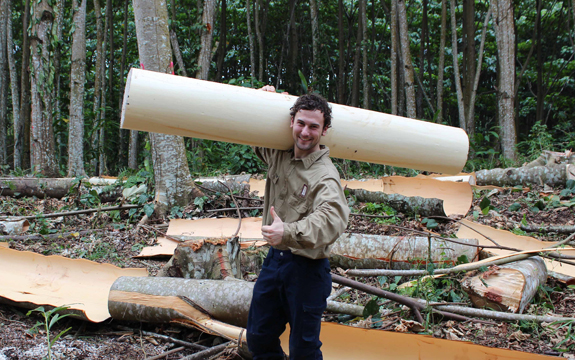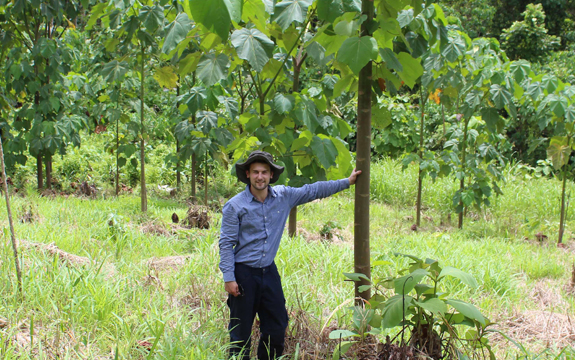Swinburne PhD student Nathan Kotlarewski receives international design award

In Summary
- Swinburne PhD student Nathan Kotlarewski has been awarded first prize in the student/ graduate category at the International Green Interior Awards
- He was recognised for his alternative uses of balsa wood from PNG
- The designs use PNG balsa for non-structural interior wall or ceiling linings in residential and commercial buildings
It was clear that there was a real need for new products and applications for balsa, to enable the people of PNG to keep growing it, to support their livelihoods, local communities and social order.
A project that sought an alternative use for balsa wood, found in Papua New Guinea (PNG), has seen Swinburne PhD student Nathan Kotlarewski receive an International Green Interior Award.
Receiving first prize in the student/graduate category, Nathan’s submission unveiled a solution that uses PNG balsa for non-structural interior wall or ceiling linings in residential and commercial buildings.
Nathan’s interest in alternative applications for balsa wood stemmed from a project he began during his honours year in the Swinburne Design Factory.
“We were presented with a social problem at the beginning of the year. As the cocoa industry was on the demise, a large number of people in PNG had resorted to growing balsa trees for financial return.

“Balsa trees are one of the fastest growing trees. They grow 40 meters in five years and must be harvested at that age to prevent financial loss from tree rot. Many of these trees were not being harvested, due to the over-supply and lack of international demand for the material.
“It was clear that there was a real need for new products and applications for balsa, to enable the people of PNG to keep growing it, to support their livelihoods, local communities and social order.”
After completing his honours year, Nathan decided to pursue the topic further. He enrolled in his PhD with Swinburne and travelled to PNG.
“While I was over there I spent time working with the locals to find out more about potential uses for balsa. They kept saying to me that product design was the key to saving the industry.”

Upon returning to Melbourne, Nathan conducted extensive mechanical, thermal, acoustic and fire testing on balsa. During this time, he found that it was a great material to use for lightweight interior walls or ceiling linings in the construction industry.
“There are many benefits to balsa. It’s much lighter, making it easier to install, compared to other products and materials and it looks beautiful. It’s also socially responsible, ethically uses an existing renewable resource and it’s commercially and economically viable.
“Existing lining products currently used in the construction industry, such as Medium Density Fibreboards are approximately 30kg and contain Urea Formaldehydes. My balsa panels are approximately 10kg, comply with E0 Formaldehyde emissions, have great thermal performance and absorb unwanted noise reverberations.”
Nathan is completing his PhD in the Swinburne School of Design’s Centre for Design Innovation. He is also a finalist in the Premier’s Design Awards, which will announce winners on 8 December.

